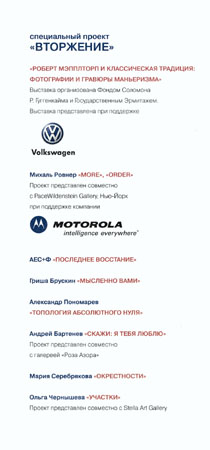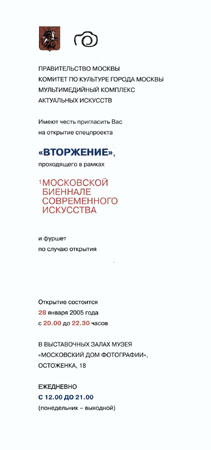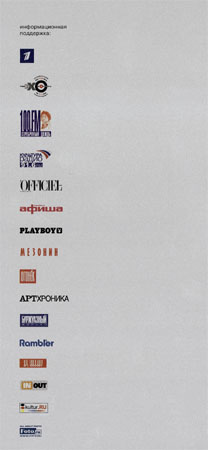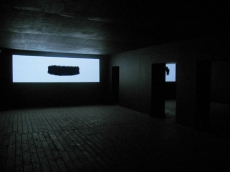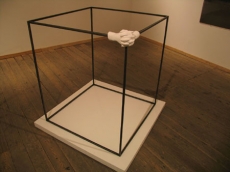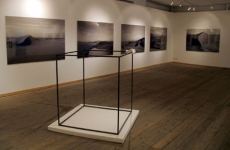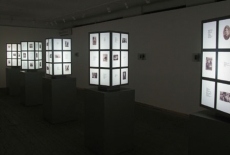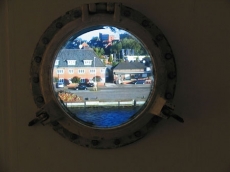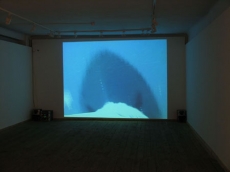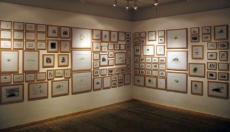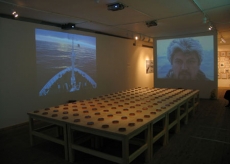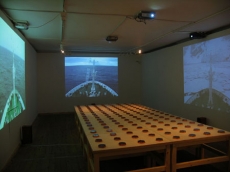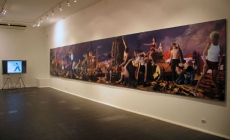Invasion
Olga Tchernisheva, AES+F, Michal Rovner, Grisha Bruskin, Alexander Ponomarev, Andrey Bartenev, Maria Serebryakova
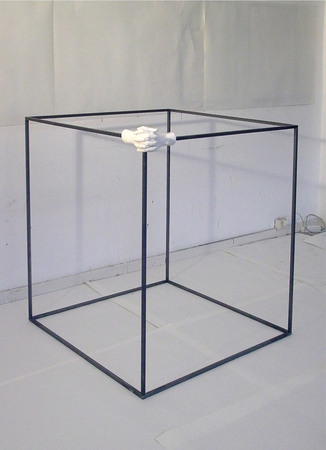
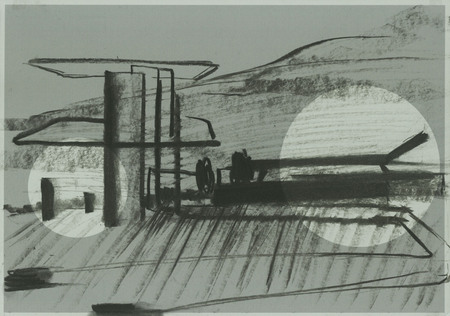
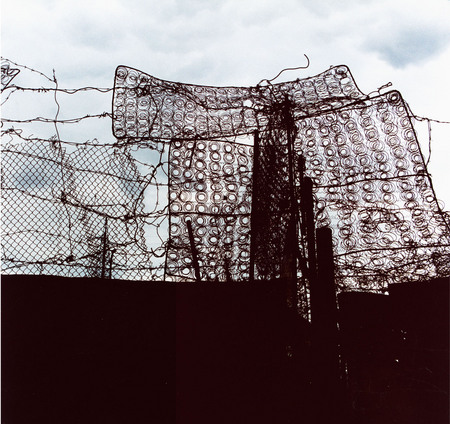
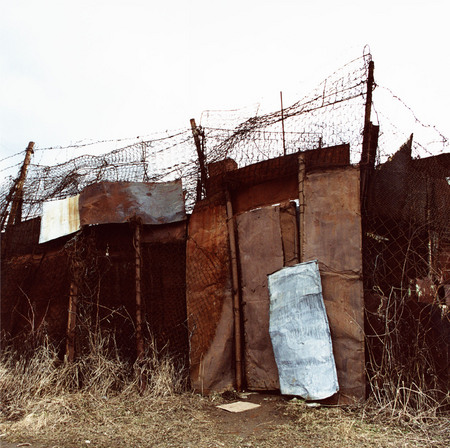
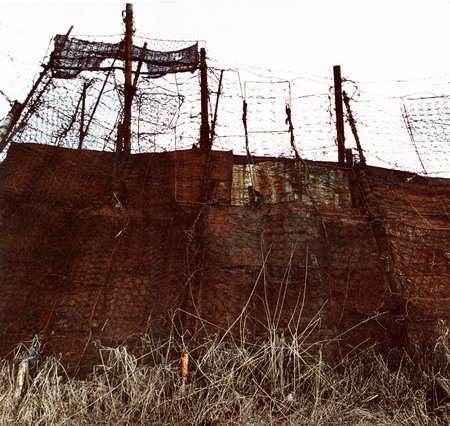
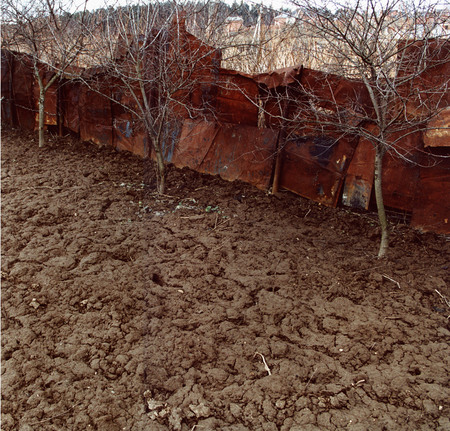
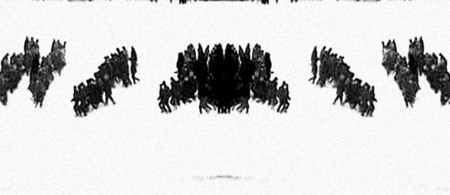
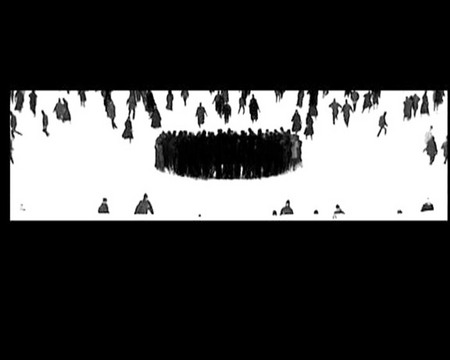
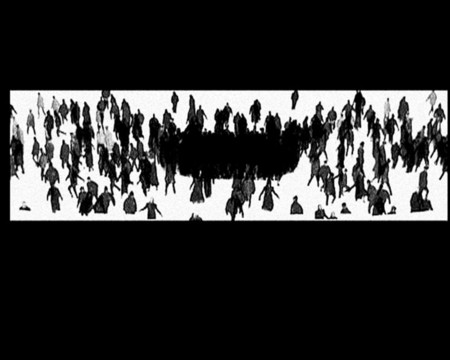
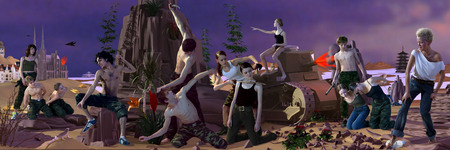
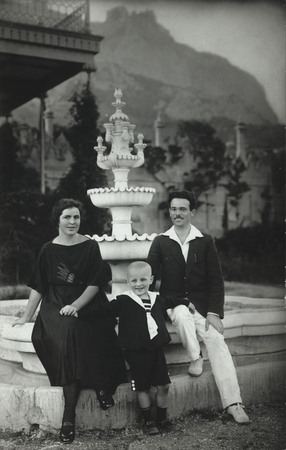
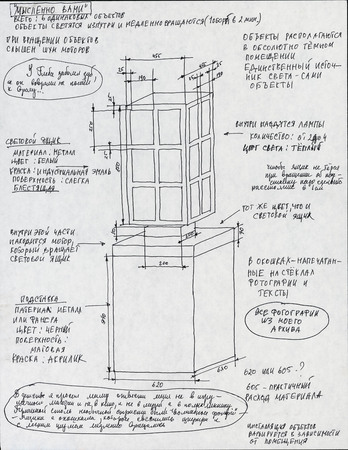
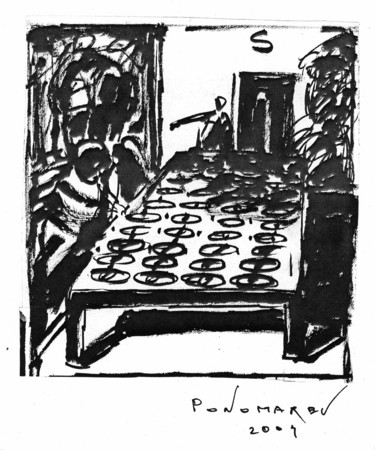
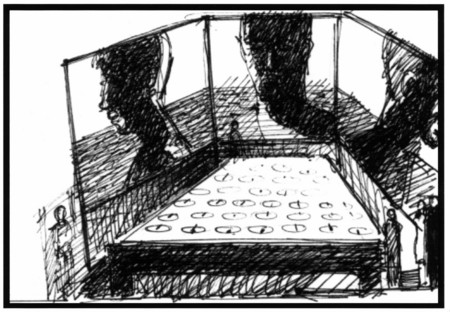

Maria Serebryakova. Object.Project “Vicinities”. 2005
Maria Serebryakova. A picture from the “Vicinities” series. 2005
Olga Tchernisheva. “Sites”. 2004. Project is presented together with Stella Art Gallery
Olga Tchernisheva. “Sites”. 2004. Project is presented together with Stella Art Gallery
Olga Tchernisheva. “Sites”. 2004. Project is presented together with Stella Art Gallery
Olga Tchernisheva. “Sites”. 2004. Project is presented together with Stella Art Gallery
Michal Rovner. “Order”
Michal Rovner. “More”
Michal Rovner. “More”
AES+F. “Last Riot“. 2005
Grigory Bruskin. Photo from the family archives. 2005. From “Mentally you” series
Grigory Bruskin. The sketch of installation. 2005. From “Mentally you” series
Alexander Ponomarev. The sketch of installation “Topology of absolute zero”. 2005
Alexander Ponomarev. The sketch of installation “Topology of absolute zero”. 2005
Andrey Bartenev. The sketch of installation “I love you”. 2005. Sound sculpture. Project is presented together with Roza Azora Gallery
Moscow, 29.01.2005—6.03.2005
exhibition is over
Share with friends
Special project of 1st Moscow Biennale of contemporary art
For the press
The virtual world, generated by the real world of the 20th-century as a test-tube organism, is expanding, leaving its borders and conquering new zones; devouring creators and mutating into something absolutely new. In the «new world» real wars look like games from www.americasarmy.com and prison tortures resemble sado-masochistic exercises of modern-day Valkyries. Technologies and materials transform an artificial environment into the fantasy landscape of a new epic. The existence of this «paradise of sweets» is available for some people and tempting for others. This Eden is a mutant-world where time stands still, where previous epochs neighbour with the future, and where its tenants lose their sex or age, approximating to angels. This is a world where even the most cruel, disturbing or erotic fantasy is, in the unsteady, vacuous perspective of
Video-Installation, 2005
The project is presented by Multimedia Complex of Actual Arts
Curator: Olga Sviblova
AES + F
Andrey Bartenev is the most paradoxical contemporary artist in Russia. A showman and an actor, a set designer and assistant to the great English theatre director and performer Robert Wilson, he has received wide publicity and acknowledgement throughout Europe (especially the UK) and America.
In Russia, Bartenev has been treated with doubt. His everlasting, costumed dances with object-transformers were branded as kitsch, glamorous pop culture. The situation changed radically though, after the opening of the «Art-Moscow» fair in 2004. Presenting an installation «Snow in London», the artist turned out to be a leader of the exhibition, leaving behind all «sacred cows» of Russian contemporary art. The interactive and attractive show, with its high-tech use of video, music and light, could decorate a display of the most prestigious art forums. A combination of humour, intellectual play and refined visual culture allowed for the talking about of a new stage in the creative work of Bartenev.
In Multimedia Complex of Actual Arts the artist presents a plastic and sound metaphor of the Moscow Biennale’s main theme, «Dialectics of Hope». A sound sculpture, devised by Bartenev, revives the words «I love you». The audience is declared to be in love, and a sound becomes a form: it runs by metallic arcs, vibrating in acoustic membranes, rustles, glares, multiplies, filling the space with special music. The sound architectonics is created with the help of a complicated multimedia construction.
Sound sculpture, 2005 Music: MUNGUSID, composition «I’m glad — I’ve found you»
The project is presented by Multimedia Complex of Actual Arts
Curator: Olga Sviblova
Sergey Khachaturov
You can hear the sound similar to laugh, melancholy or delight. Sometimes it resembles moaning.
First the sound sparkles with the clarity of water, then with the whisper of the night, and the tinkling of the dawn or the rustling of clouds.
You cannot understand why you love the sound so much, you cannot quite make out all its nuances and gradations.
And everything turns out to be so unsophisticated, as the beloved voice tells you: «I love you.»
All loving people may come and say — and all the loved may come and hear. The sentence «I love you» needs universal audio reproduction.
The essence of the sculpture can be ascertained through a connection between what can be seen and what can be heard. The architectural model of I Love You is created by the positioning of loud-speakers in the space, the direction the loud-speakers face inwards, and the conflict between the sound volume and the space keeping it back.
The multiplication of the number of sound reproduction sources provides for a new sound formation and a perceptive shift of the phrase «I love you».
The abolishment of the mono-directionality of sound sources insures the sculptural solid becomes filled with sound.
The spatial shift of sound-sources determines the boundaries of the sound’s sculptural solid; the combination of a sound and a form, and a form and a sound. The deconstruction of the phrase «I love you» results in a flying sound ship of love.
Sound sculpture Music: MUNGUSID, composition «I’m glad — I’ve found you»
The project is presented by Multimedia Complex of Actual Arts
Curator: Olga Sviblova
Andrey Bartenev
In my childhood I asked my mother to take me, not to the toy store, not to the cinema, not to the museum, but to the outpatient’s clinic. The reason of this unusual passion were the «magic lanterns» — boxes with windows, shining from within, and slowly revolving to produce a small noise. The windows were glazed and had drawings painted onto the glass. The drawings were accompanied by texts, for example: «Gleb had a toothache, but he didn’t go to see the doctor at the proper time...» Thereafter followed a story of unlucky Gleb. I could sit for hours, enchanted, looking at the pictures, imagining Gleb’s apartment, or what his mother, father, sister and friends were like... I was desperate to get acquainted with Gleb.
The idea of «Yrs Truly» owes something in particular to these memories, precisely as they defined the form of the objects in the work.
«Yrs Truly» is a personal archive of the author transformed into TEXT.
The TEXT (or message) is a family photo album, poetical texts of romantic and tragic family stories, secret encoded texts (the childhood of a girl Safochka), anecdotes, recorded conversations, biographical particulars, documents, letters, inscriptions on postcards, addresses, phone numbers, words without context and more.
The composition of the text has its logic inherent only in the present work and its unique grammar. «Like threads of a necklace the lines tear, and the letters roll whenever they want...» The letters know exactly where to go. To let them roll in the right direction was one of the author’s tasks.
I have hung family album photographs on the walls of all my apartments and studios. Most of the people pictured in the daguerreotypes passed away long ago and were not acquainted with me. I, however, was constantly engaged in a dialogue with them. The work is born out of these conversations. The photographs revive on the «pages», transforming the process of reading into a spiritualistic seance. «Yrs Truly» is a message, a kind of HIS telegram to THERE.
A telegraphic style also comes out of here. The intonation «mentally with you» can be formulated as a «concept of sincerity». To bring back «true love» from kitsch into TEXT was also a task of the author.
The correspondence between a picture and a text may be divided into three types: a picture coincides with the text (partially or completely), possibly coincides with the text (the audience has to guess), or does not coincide with the text at all; it is an independent message.
There are blanks left between the short fragments making up the TEXT (something unuttered) which a reader-spectator may (should) fill in thanks to his or her own imagination (and personal experience). He or she is to suggest one’s own comment («It is rather worth commenting the comments than the life itself.»). And, in that way, he is to learn and appropriate the text: «Didn’t I have the same experience?»
The apparent simplicity of the concept of «one breath» is another task formulated by the author since the very beginning. «Yrs Truly» is, in a sense, a book of several generations. This is a magic lantern, a time-machine, inviting a spectator or reader to set out on a journey, where everybody is on the way to one’s past, to one’s childhood.
Installation
The project is presented by Multimedia Complex of Actual Arts
Curator: Olga Sviblova
Grisha Bruskin
«Sites» is a series of photographs made on the territories of garden-plots near Moscow in early Spring.
Vertically placed huge rusty metal sheets separate the land into small sections, where it is possible to cultivate soil for planting. It appears as if people who have spent their lives in an urban environment strive once again to reach the soil and return to it, but in this transformation they carry the weight of these metal shells upon themselves; they have learnt only to build enormous walls, armored doors and a defensive architecture. These tagged flaky rusty walls represent our ability to create insurmountable barriers for the protection of our world, carried out on a monumental scale.
Light boxes
The project is presented by Multimedia Complex of Actual Arts and Stella Art Gallery
Olga Chernysheva
Michal Rovner is an Israeli artist who has lived in New York since 1987. She trained in classical ballet, studied philosophy and cinema; but then she began her art career as a photographer. She obtained worldwide recognition with her video artworks ‘Border’ (1996), ‘Mutual Interest’ (1997), ‘Overhanging’ (1999), ‘Coexistence 2’ (2000), ‘Notes’ (2000) and ‘Time Left’ (2002).
Her project ‘Data Zone’ became the main sensation in the Israeli pavilion at the last Venice Biennale in 2003. Enormous lines of people drew up around the pavilion, reminiscent of the artist’s own fantastic installations, accompanied by music written specially by Philip Glass and which has a direct relation to the choreography of her movable forms that appear as if they themselves were music symbols.
Michal Rovner’s work presumes to turn to the major global philosophic and existential problems of human existence, the relations of a concrete individual to their human community in general, examining determination and fortuitousness, chaos and order, the future in relation to the past, what is real and imaginary during the postmodernist epoch. She articulates her vision with the help of fundamentally new artistic language. The very complicated computer processing of real videotaped material gives her the ability to create her global models, which resist verbalization, having instead a phenomenal emotional effect.
«Each of my video projects is a result of clearing and refinement, the result of a process, during which I get rid of all the details to come to the essence of things...The permanent alternation of substance attracts me. Indeed, all my work can be analyzed as a question about human existence, about its fragility and the fragility of all things, about how easy it is sometimes to destroy or force to disappear a living creature or a thing. But I never expressed all these concerns openly, they enter into the space where, I hope, people will perform new experiments. This is important for me...» (Damien Sausset’Michal Rovner, Choregraphe des Ombres’ Connaissance des Arts, No. 613, February 2004).
The project is presented by Multimedia Complex of Actual Arts
Curator: Olga Sviblova
Olga Sviblova
Mariya Serebryakova «Outskirts», 2005
In the 1990s Mariya Serebryakova became the youngest participant at that year’s «Documenta» exhibition, held in the German town of Kassel. Her works have been exhibited widely in many European and American museums, and for the last 10 years she has lived and worked in Germany.
For her exhibition at the Multimedia Complex of Actual Arts the artist has made an installation entitled ‘Outskirts’, where photos, objects and graphics form a unified and spatial plastic image. More precisely, it creates an intrigue. As usual, the artist is captivated by opening up and surpassing of spatial borders. The audience experiences the process in a tactile way, like a mental illness or form of stress. It is as if the overcoming of space was synonymous to the notion of «crime». From the photo-landscapes of China, silent and aloof through the course of time, to the lines-schemes-constructions winding around the world in expressionist drawings, and a carcass-like object parallel-piped with two fastened sculptural hands squeezing the top — everything disturbs and bears danger. For the artist, the trial of space becomes a risky adventure, somewhat reminiscent of the atmosphere of a David Lynch movie.
Installation
The project is presented by Multimedia Complex of Actual Arts
Curator: Olga Sviblova
Sergey Khachaturov


